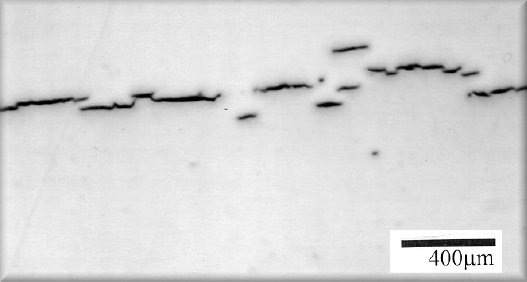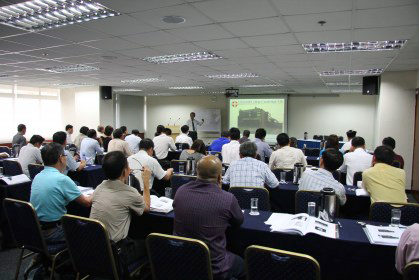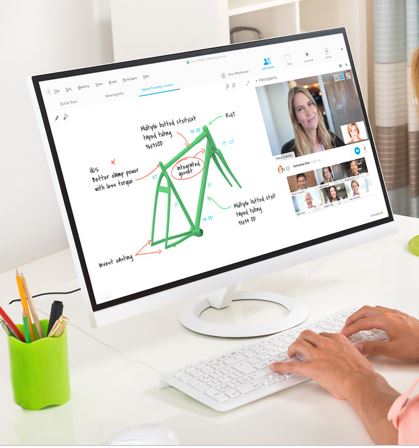|
 |
|
Home |
Consulting |
Training |
Expert Witness |
Failure Analysis |
Design Review |
Corrosion Test |
Corrosion Software |
Protective Coatings |
Materials Selection |
Cathodic Protection |
>>> |
|
Environmental Cracking
(HB-HIC-SWC-SOHIC-SSC-SZC-HSC-HE-SCC): Recognition, Mechanisms and
Prevention |
|
Course Outline |Who Should Attend |Registration |In-House |On-Demand |Online Courses |PPT Slides+Testbank |Course List
|
Why WebCorr
|
|
Corrosion Course Overview |
|
 Environmental
Cracking is one of the key factors that can affect the structural
integrity or limit the life of metallic structures. Environmental
cracking is a general term that includes: stress corrosion cracking
(SCC), caustic cracking, liquid metal cracking, corrosion fatigue,
hydrogen blistering, hydrogen embrittlement (HE), hydrogen-induced
cracking (HIC), stepwise cracking (SWC), stress-oriented
hydrogen-induced cracking (SOHIC), sulfide stress cracking (SSC),
soft-zone cracking (SZC), and hydrogen stress cracking (HSC). Environmental
Cracking is one of the key factors that can affect the structural
integrity or limit the life of metallic structures. Environmental
cracking is a general term that includes: stress corrosion cracking
(SCC), caustic cracking, liquid metal cracking, corrosion fatigue,
hydrogen blistering, hydrogen embrittlement (HE), hydrogen-induced
cracking (HIC), stepwise cracking (SWC), stress-oriented
hydrogen-induced cracking (SOHIC), sulfide stress cracking (SSC),
soft-zone cracking (SZC), and hydrogen stress cracking (HSC).
This 5-day corrosion short course systematically and thoroughly covers
the recognition, mechanisms, test methods and prevention of the various
types of cracking phenomena. Also discussed in this corrosion short
course is the NACE MR0175/ISO 15156 standard for the selection of
crack-resistant materials for use in H2S-containing oil and gas
environments.
This corrosion course
is available for in-house training, online and distance learning
worldwide. It can also be customized to meet the specific needs of your
organization.
|
|
|
|
Corrosion Course Outline |
|
1. Introduction
2. Corrosion Basics
3. Overview of Environmental Cracking
4. HB-HIC-SWC-SOHIC-SSC-SZC-HSC-HE-SCC: Recognition, Mechanisms and
Prevention
4.1 Overview of Hydrogen Damage
4.2 Hydrogen Blistering (HB) and HIC-SWC
4.3 High Temperature Hydrogen Attack (HTHA)
4.4 Hydrogen Embrittlement
4.5 Hydride Embrittlement
4.6 Hydrogen Induced Cracking (HIC), Stepwise Cracking (SWC)
& SOHIC
4.6.1 Definition
4.6.2 Recognition
4.6.3 Mechanisms
4.6.4 Factors Influencing
HIC, SWC and SOHIC
4.6.4.1 Environmental Factors
4.6.4.2 Metallurgical Factors
4.6.5 Prevention and Control
4.7 Sulfide Stress Cracking (SSC) and Soft Zone Cracking
(SZC)
4.7.1 Definition
4.7.2 Recognition
4.7.3 Mechanisms
4.7.4 Factors Influencing
SSC and SZC
4.7.4.1 Environmental Factors
4.7.4.2 Metallurgical Factors
4.7.5 Prevention and Control
4.8 Hydrogen Stress Cracking (HSC) and Hydrogen Embrittlement
(HE)
4.8.1 Definition
4.8.2 Recognition
4.8.3 Mechanisms
4.8.4 Factors Influencing
HSC and HE
4.8.4.1 Environmental Factors
4.8.4.2 Metallurgical Factors
4.9 Stress Corrosion Cracking (SCC)
4.9.1 Definition of
Stress Corrosion Cracking
4.9.2 Recognition of
Stress Corrosion Cracking
4.9.3 Mechanisms of
Stress Corrosion Cracking
4.9.4 Factors Influencing
SCC
4.9.4.1 Environmental Factors
4.9.4.2 Metallurgical Factors
4.9.5 Prevention and Control
4.10 Stress Corrosion Cracking of Pipeline Steels
4.11 Comparison of HIC-SWC, SOHIC, SSC, SZC, HSC, HE and SCC
4.12 HIC-SOHIC-SSC-HSC-SCC Test Methods
4.13 Corrosion Fatigue and Liquid Metal Embrittlement
4.14 Computer Software Tools for Modeling and Prediction
of Environmental Cracking
5. Understanding NACE MR0175-ISO 15156
5.1 Objective
5.2 Background
5.2.1 Abbreviated Terms
5.3 NACE MR0175-ISO 15156 Interpretation and Maintenance
5.4 From NACE MR0175 to NACE MR0175-ISO15156
5.4.1 Significant changes
to previous MR0175:
5.4.1.1 Responsibilities for Various Users of the Document
5.4.1.2 Changes that affect only the Carbon Steel Alloys
5.4.1.3 Changes that affect only the Corrosion Resistant Alloys
5.4.1.4 Other Options for Material Qualifications
5.4.1.5 Requirements for Marking (Part 2, Section 9; Part 3, Section 7)
5.5 Structure of New Document
5.5.1 Part 1 - General
Principles for Selection of Cracking-Resistant Materials
5.5.1.1 Scope of the Standard - Equipment and Component Design (Section
1)
5.5.1.2 Service Conditions: Evaluation and Definition (Section 6)
5.5.1.3 Pre-Qualified Materials Selection Guide (Section 7)
5.5.1.4 Material Qualification Alternatives and Implementation
5.5.1.5 Materials Qualification Documentation (Section 9)
5.5.2 Part 2:
Cracking-Resistant Carbon and Low Alloy Steels
5.5.2.1 Scope of the Standard - Equipment and Component Design
5.5.2.2 Carbon and Low Alloy Steels in H2S environments (Section 6)
5.5.2.3 Qualification and Selection (Section 7)
5.5.2.4 Evaluation for resistance to HIC and SWC (Section 8)
5.5.2.5 Marking (Section 9)
5.5.3 Part 3:
Cracking-Resistant CRAs and Other Alloys
5.5.3.1 Scope of the Standard - Equipment and Component Design
5.5.3.2 Corrosion Resistant Alloys in H2S environments (Section 5)
5.5.3.3 Qualification and Selection (Section 6)
5.5.3.4 Purchasing Information and Marking (Section 7)
5.6 End Userís Application Guideline for MR0175/ISO 15156
5.6.1 Select
Qualification Method
5.6.1.1 Scope of MR0175-ISO 15156
5.6.1.2 Existing Facilities vs. New Projects
5.6.1.3 Existing Facilities
5.6.1.4 New Projects
5.6.1.5 Alternative Materials Qualification
5.6.2 Qualification
By Field Experience
5.6.2.1 Material Qualification by Field Experience
5.6.2.2 Describe and document the materials to be qualified
5.6.2.3 Describe and document the service environment
5.6.2.4 Compile the Service History for a minimum of 2 years
5.6.2.5 Inspection of the in-service material
5.6.2.6 Intended Service Environment
5.6.2.7 Report and file documentation
5.6.3 Qualification
by Laboratory Testing
5.6.3.1 Material Qualification by Laboratory testing
5.6.3.2 Select material type and refer to the applicable part of
NACE/ISO standard
5.6.3.3 Select the laboratory qualification option that best fits the
application
5.6.3.4 Identify the Qualification Required
5.6.3.5 Select the Test Method
5.6.3.6 Establish the Test Conditions
5.6.3.7 Specify the Acceptance Criteria for each test method
5.6.3.8 Report the Test Results
5.7 Other Issues
5.8 References
5.9 Questions (175) and interpretations for NACE MR0175-ISO
15156
5.10 Case Studies
6. End of Course Examination
|
|
Course Outline |Who Should Attend |Registration |In-House |On-Demand |Online Courses |PPT Slides+Testbank |Course List
|
|
Who Should Attend This Corrosion Course |
|
Designers and engineers who are involved in the selection and evaluation of
materials for use in H2S-containing environments in oil and gas production.
Successful completion of this corrosion course helps participants prepare for
their NACE certification examinations at the Corrosion Technician, Corrosion
Technologist and Senior Corrosion Technologist levels.
|
|
Registration
for This Corrosion Course |
|
Click
here to register for this corrosion course online,
or
Click
here to download this corrosion course brochure with
registration form in PDF format.
|
|
In-House Training Corrosion Courses and On-Site Training
Corrosion Courses |
|
 If you are concerned with corrosion in your
company, in-house training or on-site training is a great solution to train a group of
employees from design, production, operation, quality assurance, inspection
and maintenance, and technical sales and support on corrosion control and
corrosion prevention technology. The contents of all our corrosion courses can
be customized to fit your organization's needs. If you are concerned with corrosion in your
company, in-house training or on-site training is a great solution to train a group of
employees from design, production, operation, quality assurance, inspection
and maintenance, and technical sales and support on corrosion control and
corrosion prevention technology. The contents of all our corrosion courses can
be customized to fit your organization's needs.
There is no limit to the number of participants required for
in-house training corrosion courses. We conduct the in-house training
corrosion course at your company's premises worldwide, and at a time convenient to
your company.
Click
here to contact us
for a quotation for in-house training corrosion courses.
|
|
Corrosion
Course-On-Demand |
|
 All our publicly scheduled corrosion short courses are conducted once a year. However, you do not need to wait for one year if you have missed any of the publicly scheduled corrosion courses as we have this unique corrosion course-on-demand scheme: we will conduct the course just for you
(on an one-on-one basis) or for a small group from your company at a time and in a location convenient to you. This option costs significantly less than a full-scale in-house
or on-site corrosion training program. All our publicly scheduled corrosion short courses are conducted once a year. However, you do not need to wait for one year if you have missed any of the publicly scheduled corrosion courses as we have this unique corrosion course-on-demand scheme: we will conduct the course just for you
(on an one-on-one basis) or for a small group from your company at a time and in a location convenient to you. This option costs significantly less than a full-scale in-house
or on-site corrosion training program.
Click
here to contact us for a quotation.
|
|
Online Corrosion Courses and Distance Learning Corrosion Courses |
|
 All
our corrosion short courses are available for online or offline distance
learning. You can start an online corrosion course at any time and learn
at your own comfortable pace and schedule, whenever and wherever you
are. You have around-the-clock access to the interactive and media-rich
course materials, virtual labs, course instructions and course assessments. Discussions and questions related to the corrosion courses
are posted on the website or exchanged through email for a period up to 3 months. Video conferencing or instant messaging can also be arranged for discussions of course topics.
For those who do not have ready access to internet, we can send
you our online course materials on a CD-ROM, or DVD, or USB flash drive for offline
distance learning. All
our corrosion short courses are available for online or offline distance
learning. You can start an online corrosion course at any time and learn
at your own comfortable pace and schedule, whenever and wherever you
are. You have around-the-clock access to the interactive and media-rich
course materials, virtual labs, course instructions and course assessments. Discussions and questions related to the corrosion courses
are posted on the website or exchanged through email for a period up to 3 months. Video conferencing or instant messaging can also be arranged for discussions of course topics.
For those who do not have ready access to internet, we can send
you our online course materials on a CD-ROM, or DVD, or USB flash drive for offline
distance learning.
Click
here to to register an online corrosion short course. |
|
|
|
Corrosion
Course-On-Webex |
|
 Webex
is hosted by Cisco, a product purpose-built for real-time web
communications. If you are an existing user of Webex, or if you are
willing to experience the power of Webex, we can conduct the course for you
over Webex with audio and video presentations and interactions with the
course instructor and other course attendees in real-time. It is just
like the physical classroom settings that everyone can interact with each
other. Your questions will be answered in real time by our instructor. Webex
is hosted by Cisco, a product purpose-built for real-time web
communications. If you are an existing user of Webex, or if you are
willing to experience the power of Webex, we can conduct the course for you
over Webex with audio and video presentations and interactions with the
course instructor and other course attendees in real-time. It is just
like the physical classroom settings that everyone can interact with each
other. Your questions will be answered in real time by our instructor.
Click
here to contact us for a quotation.
|
|
PowerPoint Slides and Test Banks for Trainers,
Instructors, Tutors, University Lecturers and Professors |
|
If you are involved in teaching or
training, you may wish to purchase a complete set of the trainer's
package for this training course. The trainer's
package comes complete with ready-to-use PowerPoint slides (fully
editable) and test bank (with answer keys). These ready-to-use
PowerPoint slides contain high quality color photographs, illustrations,
animations, audio and video clips. The test bank contains questions
in four categories: (1) true or false, (2)
multiple choice, (3) calculation, and (4) reasoning and open-ended
discussions. The trainer's package is suitable for in-house training and
university teaching (30 lecture hours). This is exactly the same package that WebCorr uses to deliver our
current training course.
The one-time lump sum fee allows your
organization to use the training package and also modify it. For
example, your organization may modify the course contents and
re-name/re-brand the course under your organizationís name. WebCorr only
retains the copyright of the original PowerPoint slides and test bank.
Click
here to contact us if you need more information on the trainer's package.
|
|
Course Outline |Who Should Attend |Registration |In-House |On-Demand |Online Courses |PPT Slides+Testbank |Course List
|
|
Home |
Contact Us |
Copyright
©
1995-2025.. All rights reserved. |
 Environmental
Cracking is one of the key factors that can affect the structural
integrity or limit the life of metallic structures. Environmental
cracking is a general term that includes: stress corrosion cracking
(SCC), caustic cracking, liquid metal cracking, corrosion fatigue,
hydrogen blistering, hydrogen embrittlement (HE), hydrogen-induced
cracking (HIC), stepwise cracking (SWC), stress-oriented
hydrogen-induced cracking (SOHIC), sulfide stress cracking (SSC),
soft-zone cracking (SZC), and hydrogen stress cracking (HSC).
Environmental
Cracking is one of the key factors that can affect the structural
integrity or limit the life of metallic structures. Environmental
cracking is a general term that includes: stress corrosion cracking
(SCC), caustic cracking, liquid metal cracking, corrosion fatigue,
hydrogen blistering, hydrogen embrittlement (HE), hydrogen-induced
cracking (HIC), stepwise cracking (SWC), stress-oriented
hydrogen-induced cracking (SOHIC), sulfide stress cracking (SSC),
soft-zone cracking (SZC), and hydrogen stress cracking (HSC). If you are concerned with corrosion in your
company, in-house training or on-site training is a great solution to train a group of
employees from design, production, operation, quality assurance, inspection
and maintenance, and technical sales and support on corrosion control and
corrosion prevention technology. The contents of all our corrosion courses can
be customized to fit your organization's needs.
If you are concerned with corrosion in your
company, in-house training or on-site training is a great solution to train a group of
employees from design, production, operation, quality assurance, inspection
and maintenance, and technical sales and support on corrosion control and
corrosion prevention technology. The contents of all our corrosion courses can
be customized to fit your organization's needs.
 All our publicly scheduled corrosion short courses are conducted once a year. However, you do not need to wait for one year if you have missed any of the publicly scheduled corrosion courses as we have this unique corrosion course-on-demand scheme: we will conduct the course just for you
(on an one-on-one basis) or for a small group from your company at a time and in a location convenient to you. This option costs significantly less than a full-scale in-house
or on-site corrosion training program.
All our publicly scheduled corrosion short courses are conducted once a year. However, you do not need to wait for one year if you have missed any of the publicly scheduled corrosion courses as we have this unique corrosion course-on-demand scheme: we will conduct the course just for you
(on an one-on-one basis) or for a small group from your company at a time and in a location convenient to you. This option costs significantly less than a full-scale in-house
or on-site corrosion training program. All
our corrosion short courses are available for online or offline distance
learning. You can start an online corrosion course at any time and learn
at your own comfortable pace and schedule, whenever and wherever you
are. You have around-the-clock access to the interactive and media-rich
course materials, virtual labs, course instructions and course assessments. Discussions and questions related to the corrosion courses
are posted on the website or exchanged through email for a period up to 3 months. Video conferencing or instant messaging can also be arranged for discussions of course topics.
For those who do not have ready access to internet, we can send
you our online course materials on a CD-ROM, or DVD, or USB flash drive for offline
distance learning.
All
our corrosion short courses are available for online or offline distance
learning. You can start an online corrosion course at any time and learn
at your own comfortable pace and schedule, whenever and wherever you
are. You have around-the-clock access to the interactive and media-rich
course materials, virtual labs, course instructions and course assessments. Discussions and questions related to the corrosion courses
are posted on the website or exchanged through email for a period up to 3 months. Video conferencing or instant messaging can also be arranged for discussions of course topics.
For those who do not have ready access to internet, we can send
you our online course materials on a CD-ROM, or DVD, or USB flash drive for offline
distance learning. Webex
is hosted by Cisco, a product purpose-built for real-time web
communications. If you are an existing user of Webex, or if you are
willing to experience the power of Webex, we can conduct the course for you
over Webex with audio and video presentations and interactions with the
course instructor and other course attendees in real-time. It is just
like the physical classroom settings that everyone can interact with each
other. Your questions will be answered in real time by our instructor.
Webex
is hosted by Cisco, a product purpose-built for real-time web
communications. If you are an existing user of Webex, or if you are
willing to experience the power of Webex, we can conduct the course for you
over Webex with audio and video presentations and interactions with the
course instructor and other course attendees in real-time. It is just
like the physical classroom settings that everyone can interact with each
other. Your questions will be answered in real time by our instructor.